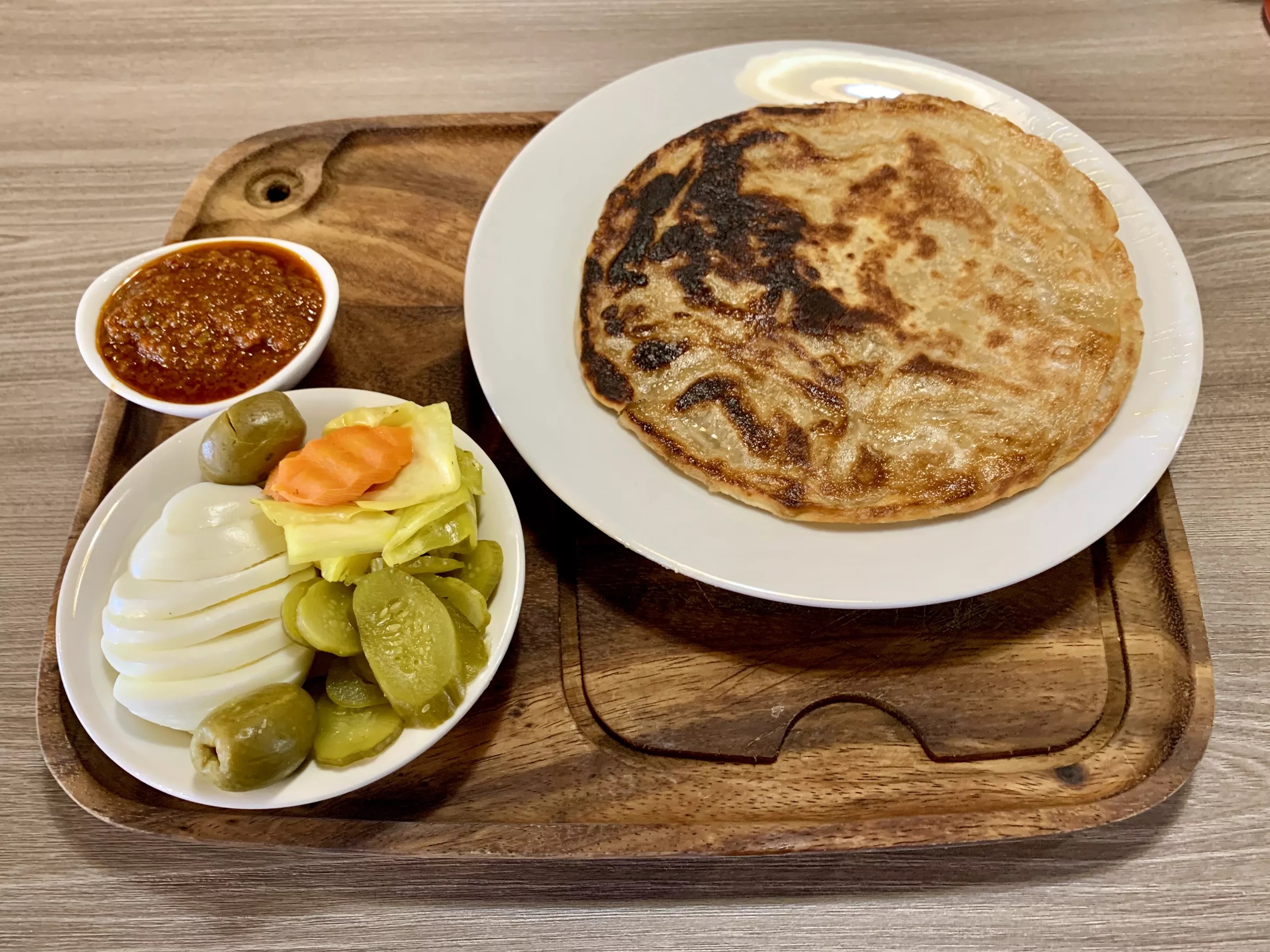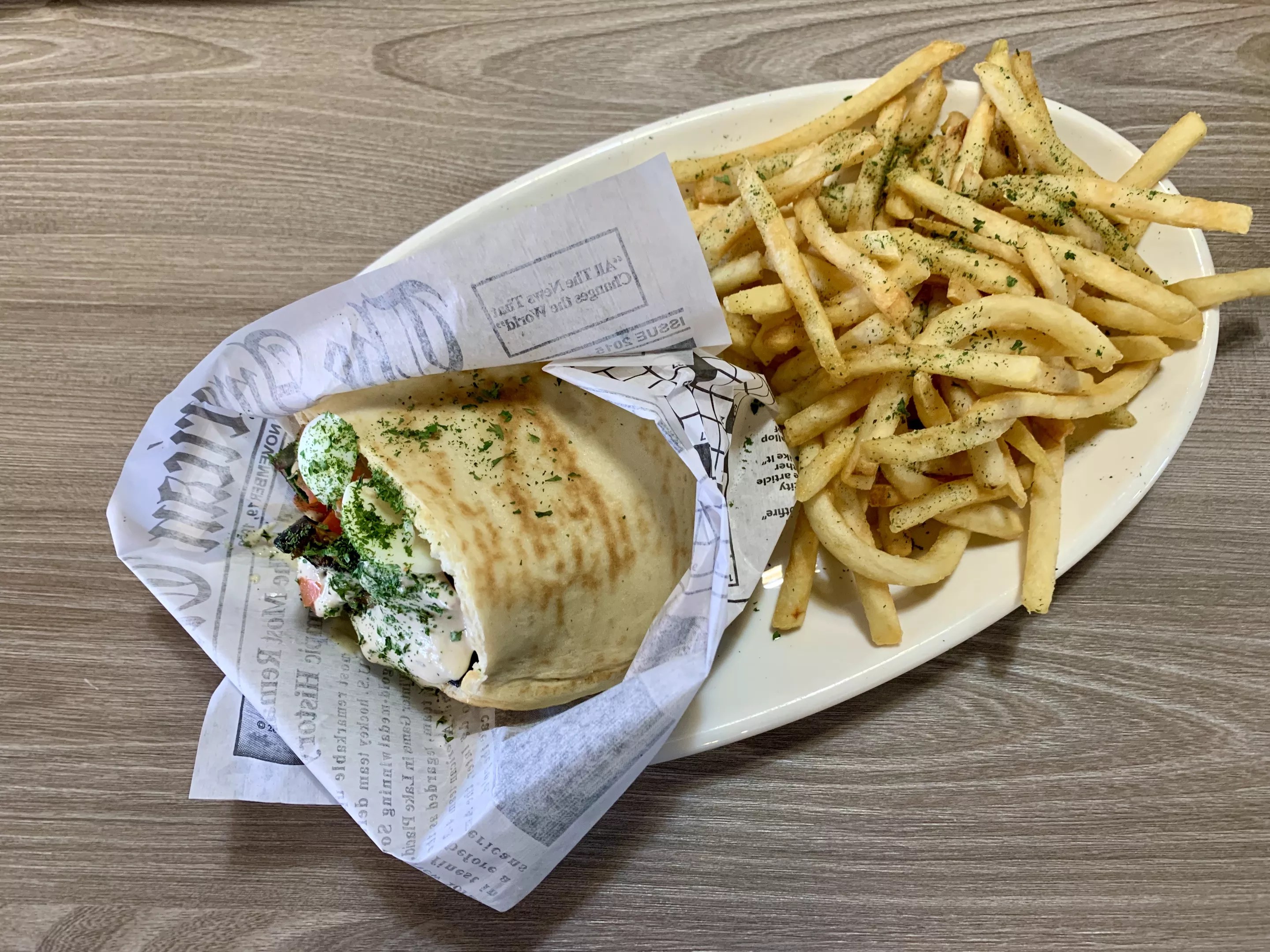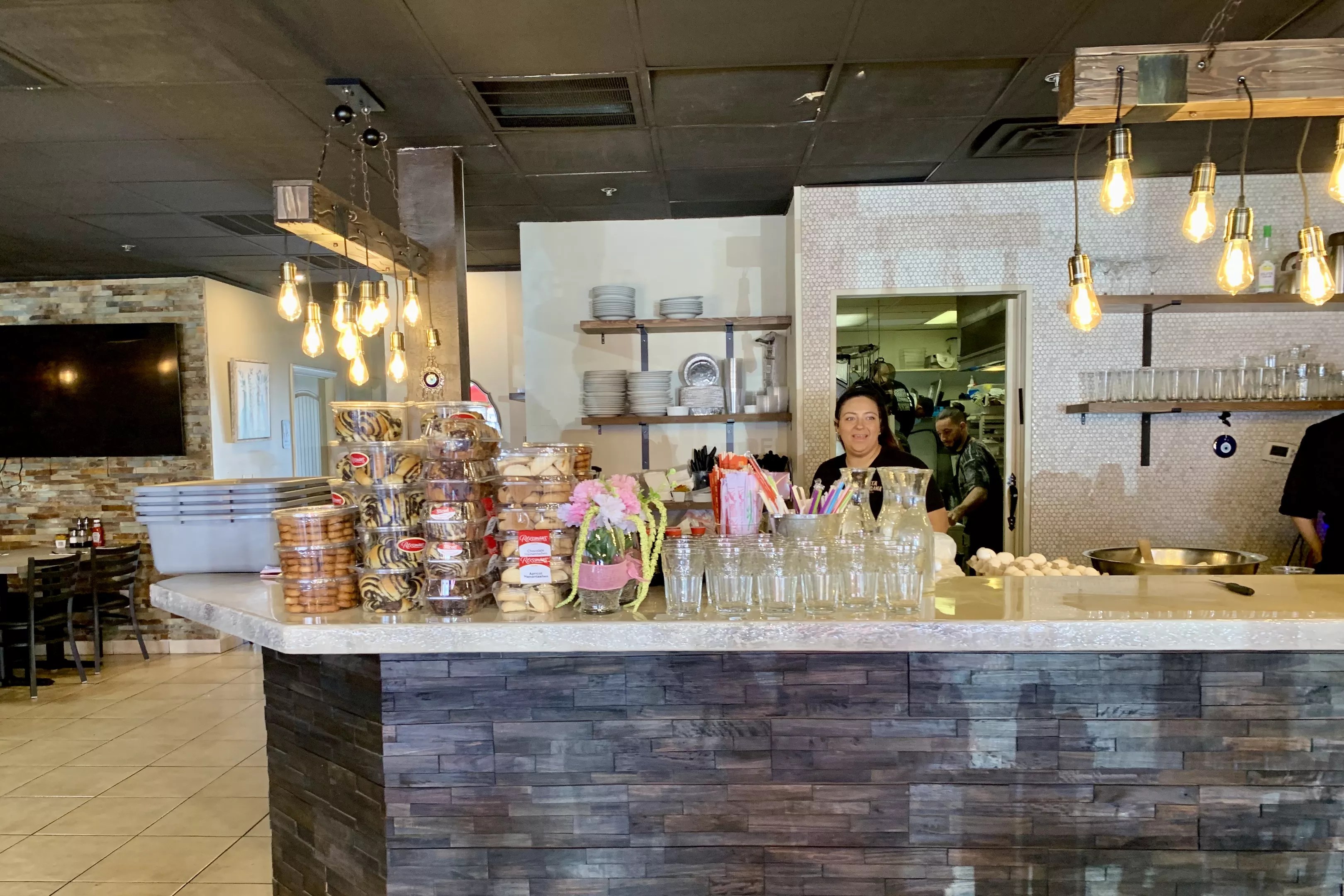
Bahar Anooshahr

Audio By Carbonatix
Kosher restaurant Fata Morgana opened in Scottsdale in January 2022, in a space formerly occupied by Aunt Abby’s Confections. Co-owners Bar Timi and David Babaganov, who hail from Israel and Canada, respectively, founded the eatery because “there were not a lot of kosher restaurants for the size of the Jewish community here,” says Timi.
“Fata Morgana” is an Italian term meaning “mirage.” It refers to Morgan le Fay, King Arthur’s half-sister, a sorceress who had the power to change shape and make images appear to others (such as ships hovering above the horizon). Scientifically, when cold air gets trapped under warm air, light refracts down, and images appear to float above the horizon.
The restaurant, which leans Israeli, is what Babaganov has called “essentially a little mirage in Arizona.”
The simple space is clean and inviting, with modern rustic decor and a casual vibe. Two large photos decorate the wall – one of spoons filled with spices the color of fall foliage, and the other, in black and white, of signs pointing to Jerusalem and Tel Aviv. Once you’ve had your fill of gazing at the counter boxes of pastries from Brooklyn-based Reisman’s – the country’s first commercial kosher bakery – you seat yourself.
The four-page menu is divided into hot and cold appetizers, salads, entrees, sandwiches, vegetarian, kiddos, sushi, and dessert.
We asked about the diverse nature of the menu. Why Moroccan Cigars? Why Yemeni bread? It turns out that Israel is a melting pot of cuisines.

Fata Morgana opened in Scottsdale in January.
Bahar Anooshahr
It’s a fascinating history as told by the Intangible Cultural Heritage of Israel Center, and one that lends some insight into Fata Morgana’s dishes and ingredients.
The Sephardic Jews brought Ottoman-influenced food, such as pies, stuffed vegetables, pastels, sabmousak (meat hand pie), burekas (filled puff pastry or filo dough), rice, and bulgar pilafs.
The Hasidic Jews of Eastern Europe brought kugel Yerushalmi (a peppery, oniony noodle pudding). Those from Russia and Poland used local vegetables such as zucchini, peppers, eggplant, chickpeas, and artichokes.
During Israel’s early years, when Holocaust survivors and Jews from Arab and other countries arrived in huge numbers, food rationing was common. That scarcity resulted in substitute ingredients: eggplants stood in for chopped liver, turkey for veal schnitzel, and fish for meat in Iraqi kubbeh (dumplings filled with ground beef and pine nuts).
The Central European immigrants brought schnitzel and strudel; Russians added beet borscht and herring dishes.
Ashkenazi Jews contributed chicken soup, lox, knishes, chopped liver, and pastries with yeast – chocolate rolls, babka, layered pastries, and nut spirals (schneken).
Immigrants from North Africa brought grilled meats, puff pastries, stuffed vegetables, pita, salads, rice dishes, couscous, matbucha (tomato and red pepper cooked salad), chraime (spicy fish stew), and shakshouka (eggs poached in a spicy tomato sauce).
Iraq-influenced dishes consist of amba (mango), kubbeh, kebab, pickled vegetables, sabich (see below). Turkey contributed taramosalata (fish egg dip) and yogurt; Yemenite specialties include malawach (see below), skhug (spicy herb sauce), and kubane (a pull-apart bread usually used during the Sabbath).
Kosher, or kashrut (proper), food preparation and serving is based on a set of rules under which dairy and meat are kept separate; shellfish and pork are not allowed; and animals must be slaughtered by letting their blood drain, then soaking the meat in water and salting it to draw out any remaining blood.

Sabich is a popular dish of Iraqi origin.
Bahar Anooshahr
So…why sushi? “Because there is no kosher sushi,” said our server, Danielle, who is also Timi’s wife.
While we ordered, tables both inside and out began to fill up.
Our dishes started to roll in. We had chosen two appetizers to start:
Moroccan Cigars ($11.95), which reminded us of flautas, were arranged four to a martini glass with a pool of tahini in the bottom. We enjoyed the crispy texture and appreciated the tahini for added flavor and coolness. Order this if you like lamb: Although the fried rolls are filled with beef, we picked up a gamey hint and were told that the meat is cooked in lamb fat.
One of us really enjoyed the restaurant’s version of baba ghanoush ($8.95); the other would have liked a bit more garlic.
For mains, we ordered a chicken shawarma plate, which comes with two sides ($22.95). Generous portions of zesty chicken, fried rice, and grilled vegetables filled an oval plate. The shawarma was a fun exercise in spice recognition. While our tastebuds were able to discern several, Danielle told us that there are 30 seasonings used in the dish.
Sabich (pronounced with a guttural kh) ($13.95), a dish of Iraqi origin, is a pita pocket filled to the brim with a mix of fried eggplant, cooked eggs, hummus, Israeli salad and pickles, served with tahini and French fries. It’s a popular dish, but we found ourselves reaching for the salt shaker to coax out a little more flavor.
There was no disagreement over the next plate: malawach ($15.95), a dish of Yemeni origin. Presented on a wooden tray, it had three components: malawach, a puff-pastry pancake brushed with oil and fried; a spicy tomato sauce; and a bowl of hard-boiled egg and pickled veggies. We could not get enough of the flaky bread, a vessel for whatever you wish to put on it.

Danielle Timi welcomes diners with a smile.
Bahar Anooshahr
A group of four men seated in the center of the room began to recite a prayer in unison: the Birkat Hamazon, a Hebrew blessing said after meals.
The desserts at Fata Morgana are all dairy-free. Danielle offered us an order of churros ($11.95) on the house. The strips of fried dough, laden with cinnamon and sugar, were perfectly crisp and sweet, compelling us to reach for seconds.
Even sweeter was the community’s response to the restaurant. One patron, referring to her group of four, said, “We have all been to Israel many times, and the food reminds us of there. I will not make baba ghanoush at home again.”
“Ah, and the pita…,” began another.
The pitas are par-baked and steamed in-house, according to Timi: “That’s why they’re so pillowy.”
“We love this place and want it to stay in business,” concluded the group.
Fata Morgana also offers catering; learn more at the restaurant’s website.
Fata Morgana
7116 East Mercer Lane, Scottsdale
Noon to 9 p.m. Sunday to Thursday; closed Friday and Saturday